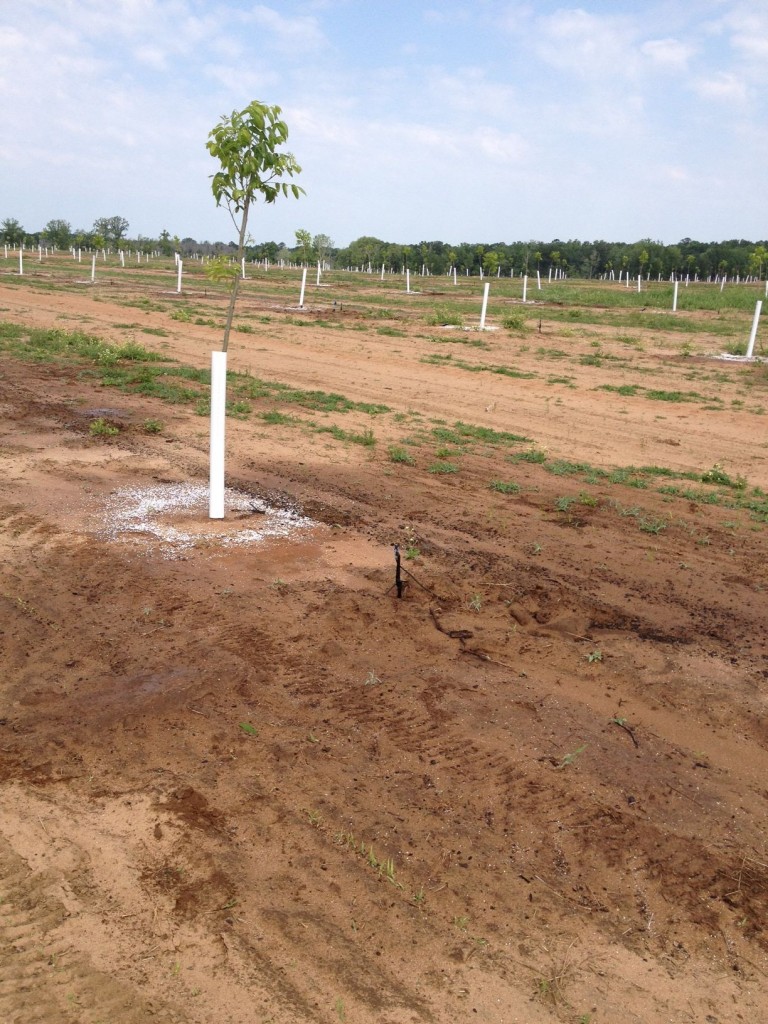By Clint Thompson
Weather forecasts are calling for hot and dry conditions for the foreseeable future. That could have a detrimental impact on pecan trees, believes Lenny Wells, University of Georgia Cooperative Extension pecan specialist.

“Especially with growers with young trees planted in the last year or two, they need to be really careful about making sure they’re watering these trees. Our recommendation is 100 gallons a week,” Wells said. “Usually, 3 to 4 hours every other day of running that system is going to get you about what you need for those trees on the first 2 to 3 years.
“With the hot temperatures that they’re talking about coming up, usually a lot of times at this time of year when it does start to get hot, water demand goes up; especially these newly-planted trees. They’re still trying to get their roots up under them and get growing. When it turns off hot and dry like that, at this point in the season, they’ve got a little growth on them. That root that’s left under there is still trying feed the tree that it’s got. When it gets hot and dry, that water demand goes up. All of a sudden, it can’t do that as well as it did before.”
Upcoming Weather
According to weather.com, rain chances are minimal for Tifton, Georgia for the rest of May with temperatures expected to approach 100 degrees Fahrenheit early next week. It’s the same forecast for Auburn, Alabama, though high temperatures are expected to only reach 95 degrees on Monday.
Heat stress and transplant shock on newly planted trees are two of the major concerns that pecan producers have during these less-than-optimal weather conditions. Irrigation remains a key management tool for all pecan farmers.
“Irrigation, not only does it supply the soil moisture that the trees need, but it also helps to keep that soil a little cooler. That’s one of the problems you see on young trees. When it turns really hot, the soil temperatures warm up. When that soil temperature gets above 95 (degrees) and it starts to kill some of those feeder roots in those shallow soil layers, that’s where a lot of times you’ll start to see some of that scorching and dieback that you get in that situation,” Wells said.









